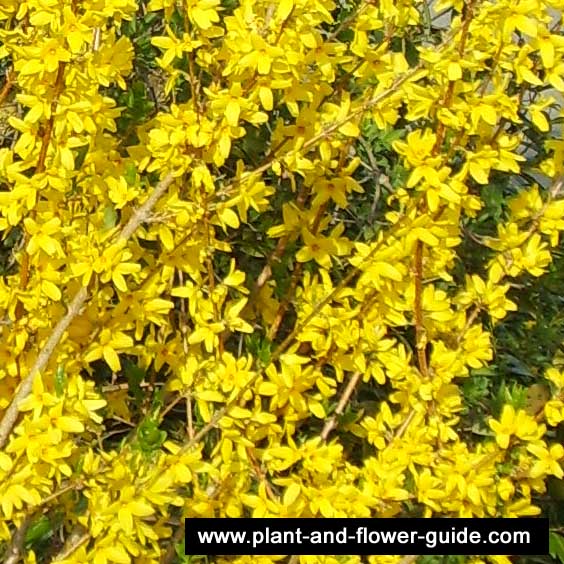Forsythia Plants
Forsythia (F.) species belong to the olive family (Oleaceae). The plants are originally mainly from Asia but some also from Southeast Europe. The genus of these plants is named in the honour of William Forsyth. He was a botanist of considerable note!
Care, Planting, Pruning and Propagating
If you like to learn about gardening information about Forsythia care, planting, pruning and propagating you should read this article.
They bloom in spring from March until May and they grow their leaves when the flowering is completely over. They are summer-green bushes that grow about 1 to 3 m in height. Some grow upright, but others are weeping shrubs.
These plants are very popular in gardens and parks! After the sinister, greyish, whitish winter days they are very welcome when the start their intense yellow blooming phase.
Actually today is the 17th of March and we had a few warm (up to 20 Degrees Celsius) and sunny days in a row. I have these bushes growing in front of my kitchen window. When I got up this morning and prepared my obligatory morning coffee I looked out the window and the bushes looked bleak and nothing but spring. When I started preparing lunch I looked again… Wow! They started blooming! They popped up just within 2 to 3 hours! It amazes me every year again and again when plants spring to life like this! Just like someone switched a button!

But unfortunately, these plants only look good. The downside of their flowers is that they do not hold any ecological value whatsoever. They produce neither nectar nor pollen, which is essential food for insects! You should go without these bushes and other flower-rich garden plants like rhododendron, azaleas and Japanese flowering cherries if you like to have a garden which is home to many animals of different species. Rather plant wild plants and flowers instead.
Take note: All parts of the plant are slightly poisonous (poisonous plants)!
Return from Forsythia to Homepage